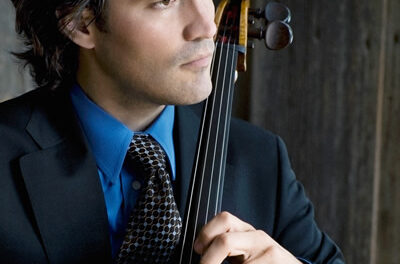In 1892 on the grounds of Belmont Abbey near Charlotte, the cornerstone was laid for the Abbey Basilica. The exterior of this church is substantially unchanged since that original construction, but in 1964 architect Fredrich H. Schmitt was commissioned to perform a radical renovation of the interior space. The result is a graceful marriage of fine old architectural elements with new thoughts. As part of this renovation, a flagstone floor was laid over the original wood floor, increasing the acoustical liveliness of the space. The result is a pleasing acoustical presence, making this a choice venue for choral and religious instrumental music.
As a part of the 2009-2010 Arts at the Abbey series, director Karen Hite Jacob presented the Abbey Chorus in a program of seasonal music in five languages. The Abbey Chorus is composed mostly of Belmont Abbey College students supplemented by a few faculty and supporters. Ms. Jacob and guest organist David Brockman provided instrumental accompaniment on organ and piano, with some supplemental parts for recorder or violin. A few pieces had been arranged for three alto saxophones. The audience was invited to join in singing three familiar carols scattered through the program. The intelligent planning that characterized the entire program showed up immediately in the first two groups.
Logically enough, the first group consisted of advent hymns. A 9th century Latin setting of “O Come, O Come Emmanuel” was followed by “Prepare the Way, O Zion” sung to a 17th century Swedish tune, with three student saxophonists taking their first turn on stage. The audience was then invited to sing “Come Thou long Expected Jesus” using the familiar 19th century hymn tune “Hyfrydol” rather than the customary 18th century tune “Stuttgart.”
The second group began with a carol by contemporary American composer Robert C. Lau that celebrates the Virgin Mother, very appropriate for a basilica whose full name is the Abbey Basilica of Maryhelp. This was followed by a delightful find, an 18th century carol by the little-known Charles King, the London composer who in 1697 succeeded Jeremiah Clarke as Master of the Choristers at St. Paul’s Cathedral. The saxophonists returned for the carol “O Tannenbaum,” which is based on a 16th century German folk tune. The first six selections thus included music of six different centuries.
And so the evening progressed with one pleasant set after another. High points included the exquisite recorder playing of Edward Ferrell and the ringing tone of soprano soloist Nicole DeCastro in “Sweet was the Song the Virgin Sang” from the Sacred Harp collection of Southern American music. The Abbey Chorus had a pleasant youthful sound and had been well-prepared, sounding especially good in familiar carols from the more recent past, even in John Rutter’s “Nativity Carol,” which is not as easy a piece as it sounds. Given the college’s small size, it is commendable that they can field a 21-person choir with such good intonation and tone.
My only criticisms of the program were instrumental. The principal saxophonist had a full skill set, but the other two saxophonists showed frequent intonation problems and even the occasional nervous squeak. For my taste, Mr. Brockman’s organ registrations were sometimes inappropriate. (Too reedy in one place where some snarling baroque sounds would have sounded better, and too much French vibrato in another place). On the other hand, I enjoyed the registration choices for the Eastern Orthodox carol “Good News from Heaven” and some other carols.
In summary, the program was heartfelt on the part of the choristers and accompanists, and heart-warming for the audience of over 150. It was a pleasure to kick off the Christmas season with this concert.











